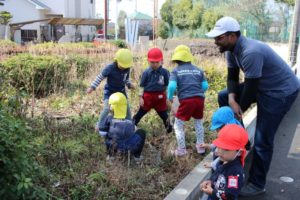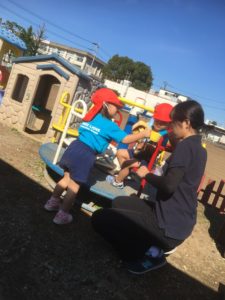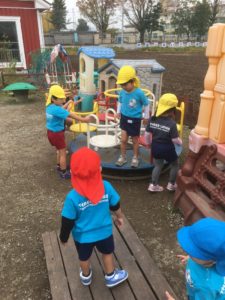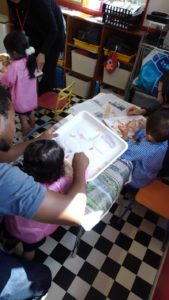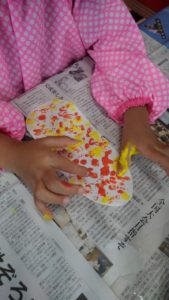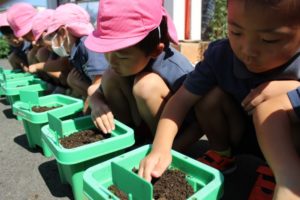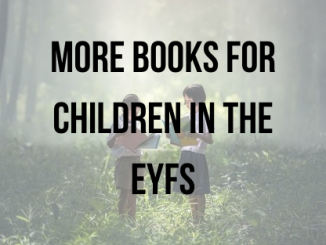What is ‘In the Moment Planning’?
“In the Moment planning” or “ITMP” is a movement gaining real traction in UK Early Years settings. The term is largely credited to Anna Ephgrave and her books but ITMP also enthuses Early Years practitioners who see it as an extension of the work they already do.
Anna Ephgrave summed up the approach very simply, by saying “Let the children choose what to do, join them and support them in their pursuits. Then write up what has happened.”
In the Moment Planning starts with an enabling environment; a room, classroom, outdoor area which stimulates children’s varied interests through carefully chosen resources. Open ended resources such as building block or cardboard tubes are much better than toys that can only be used in one way.
Practitioners then observe children and listen carefully to them to understand which resources have sparked their interests and what the concept they are experimenting with is. When a child is showing curiosity, fascination, and concentrating intently on what they are doing then the practitioner will probably realise this is a “Teachable moment”.
“Teachable moments” are not the opportunity for a “teacher” to jump in and begin instructing children, instead the practitioner will identify that a child is learning through play and may take the opportunity to extend learning by providing additional resources or asking open-ended questions “I wonder what would happen if we…”
Documentation takes place later on, so that it does not interrupt the learning in the moment, and should include the spark, the teachable moment and what the practitioner did next (the ‘next steps’). This can then be used to form an observation of the child’s learning and developmental stage as well as to inform planning for resources.
Reduces paperwork, and Stress
An easily identifiable benefit of In The Moment Planning is that it removes an awful lot of paperwork from settings, which has got to be a good thing as paperwork is one of the most frequently cited reasons for stress and burnout in Early Years teachers. When using ITMP planning themes or activities in advance is not necessary, as practitioners follow children’s interests in the moment.
More time for ‘positive relationships’
This approach allows practitioners to spend much more time with children and the vast majority of practitioners are very happy with this outcome! ITMP allows more time and space for authentic relationship building which the EYFS strongly supports with ‘positive relationships’ being one of its core principles. As practitioners and children spend more time together, stronger attachment relationships are forged so that children can be more confident and effective learners. Practitioners too are happier, more confident and more relaxed when encouraged to spend time getting to know children better, and as a result they work more effectively too!
More emphasis on an ‘enabling environment’
Another core principle of the EYFS is an ‘enabling environment’ which means an environment that enables children to learn through providing lots of opportunity for exploration, sparking curiosity and following children’s lead. ITMP focuses specifically on following children’s “Sparks of interest” and a rich environment with lots of open-ended resources will allow practitioners to identify these more easily.
The focus on environment is a positive one, as it enables practitioners to identify interest and provide an environment that will enable children to explore these further. For example, practitioners may identify that children are interested in balancing resources, and choose to provide balance weighing scales allowing children to extend and improve their understanding of this and potentially develop a further interest in numbers and mathematics.
Intuitive
In the moment planning can be seen as intuitive approach to Early Years; it allows practitioners to ‘join in’ with children and to extend learning as they see it emerging, which many practitioners have already become skilled at doing.
Those who work with babies, toddlers and young children regularly will know that they are fundamentally concerned with the ‘here and now’ and tend to operate in the moment. It is rare for young children to store up questions or ideas, instead their nature is to go with the flow of their curiosity when it is sparked.
ITMP lets practitioners be fully immersed and involved in the ‘here and now’ with children so that they can observe, extend and further children’s curiosity as it emerges, and these opportunities are not missed.
Child centred
Child-initiated play and child-led learning is widely regarded as the most effective type of learning in the Early Years, and In The Moment Planning is one of the most effective ways to introduce child-led learning.
Children are hard-wired to play and to learn through play, so this approach taps into children’s natural instincts and is an extremely effective way for them to learn. It also ensures that children are at the centre of learning; by allowing their curiosity and interests to develop naturally it ensures that children are met ‘where they are at’ in terms of interest, developmental stage and understanding. ITMP ensures that learning is not dictated to children but rather lets them set the pace.
Skilled practitioners
To make ITMP as effective as possible practitioners must be extremely skilled. Placing high value and high expectations on practitioners elevates their status. Many practitioners are extremely skilled but are seen as having a low status and “just playing” with children. ITMP makes what practitioners do explicit, and valued.
The ‘In the moment planning’ approach requires practitioners who understand child development and have the ability to ‘think on their feet’ After all, ITMP requires practitioners to complete their observation, planning, next steps, and assessments entirely ‘on the spot’
Practitioners using ITMP also need to be strong observers who can see exactly what it is a child is doing beyond the obvious “rolling a ball”. A skilled practitioner will look beyond what is physically going on in front of them and relate it to neurological development. Instead of just “rolling a ball” the practitioner may note that the child is interested in movement, direction and propulsion.
In the Moment Planning is extremely supportive of both teaching and learning in the EYFS though it certainly takes skill and practice. On the whole ITMP builds on what practitioners already do and places deliberate value on this, removing extraneous procedures and freeing up time for focus on positive relationships with unique children in an enabling environment, which leads to appropriate and effective learning and development.

